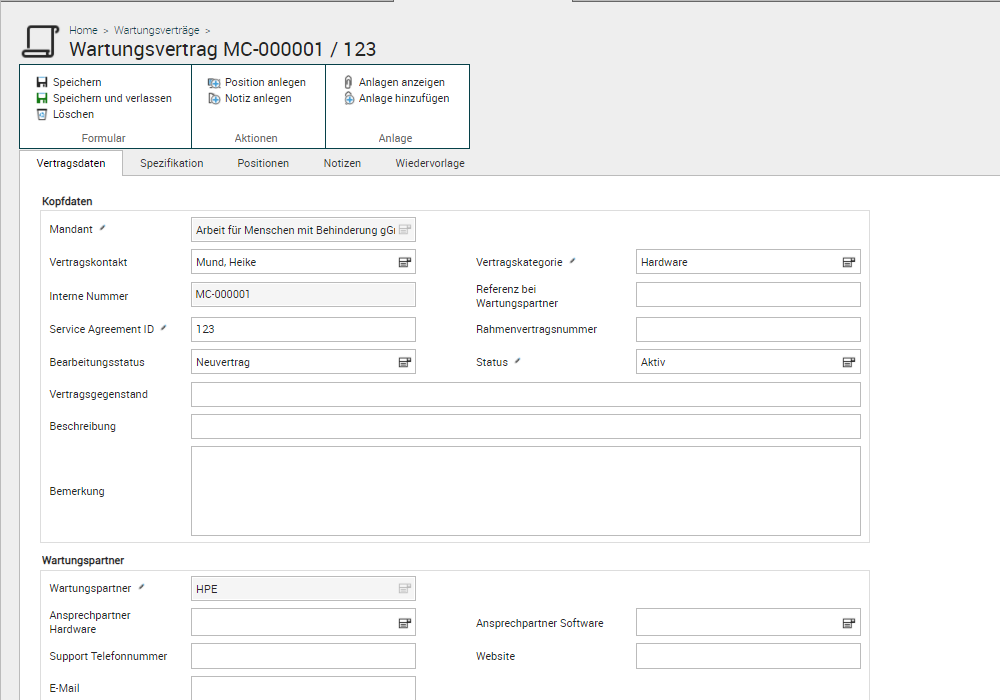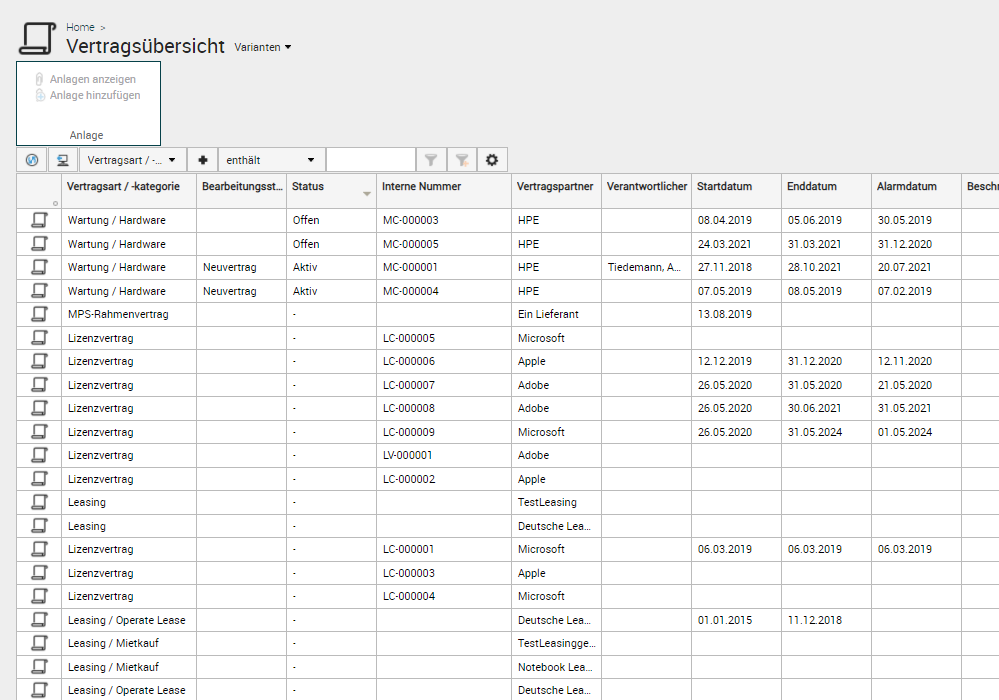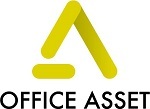Contract Management The CONTRACT module of the IT asset management software

Contracts and agreements are at the main part of almost every business transaction. They create legal liabilities: Clauses, terms, deadlines, obligations, and milestones. IT organizations must manage and track these throughout the contract lifecycle. This is the only way to maximize business benefits and minimize risks and contract-related costs.
Contract or contract and lease management can be used to map the following processes:
- Management of a wide variety of contracts and contract constructs such as framework and accession contracts or guarantees and carepacks.
- Alerting with proactive information to the users by the framework e.g. before expiring guarantees.
- Accounting option and transfer to internal costs (activity allocation) for specific types of contracts such as leasing or click contracts (For click contracts, the module PAM is additionally required).
Features
- Normal return
- Early return
- Lost returns
- Takeover
Impressions




Screenshots

Who requires contract management
- Controlling
- Sales
- Finance
- Management
- IT
potential issues
- Manual tracking and management of contract data such as notice periods and lease returns is prone to errors. Especially with leasing, a prolongation (extension) often means enormous additional costs, in addition to paying for “obsolete” hardware.
- Documents are stored, if at all on network folders. A rights management, archiving, change tracking is so hardly to ensure.
- Completed maintenance contracts, warranty and additional services are often unknown and unnecessary costs are caused.
- Software licenses are purchased sporadically, an actual need of the company is often unknown. An audit can result in severe penalties. There is no central place to record the amount of licenses and match them with the real need by the IT assets.
The solution
The Contract Management module grants complete control over supplier contracts. It supports a variety of contract types, such as order, rental, leasing, maintenance, license, and user-defined contracts. It links the contractual relationship to service level agreements and supplier contracts, providing performance parameters as a basis for renegotiating supplier terms. Contract terms are stored in a database, ensuring compliance with corporate and purchasing policies. Automatic notifications help control deadlines and ensure compliance with agreements. They reduce manual administrative work and thus increase efficiency at work.
With Contract Management, you also have an overview of your company’s leasing and rental costs. All relevant data of a lease is taken into account. In addition to the asset type and country-specific factors, this also includes the agreements that have been made with the lessor for the specific return types. When a lease expires, the necessary steps are supported directly. Functions such as residual value calculation, collection orders, new procurement or even contract extensions are mapped transparently. Leasing conditions can already be taken into account in the requirement phase, and resulting invoice documents are automatically assigned to an alternative invoice recipient. Lease costs can be allocated directly to internal activity allocation and displayed even before procurement.



